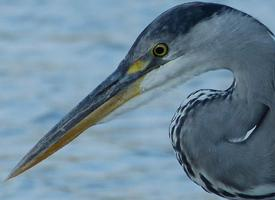
Súlyok és méretek
| Hossz | 59-tól 70-ig cm |
|---|---|
| Súly | 500-tól 900-ig g |
| Szárnyfesztávolság | 95-tól 115-ig cm |
Állatleírás
The American bittern (Botaurus lentiginosus) is a fascinating and somewhat elusive species of heron belonging to the family Ardeidae. Known for its remarkable camouflage and distinctive vocalizations, this bird has captivated bird watchers and nature enthusiasts across its range. Primarily found in North America, the American bittern has adapted to a variety of freshwater wetland habitats, making its home among reeds and cattails in marshes, swamps, and shallow lakes.Physically, the American bittern is a medium-sized bird, standing about 60 to 85 cm (24 to 33 inches) tall, with a wingspan that can reach up to 130 cm (51 inches). It has a stocky build, with a stout body, a thick neck, and relatively short legs. The plumage of the American bittern is one of its most distinctive features, showcasing a blend of brown, beige, and white colors that mimic the reeds and vegetation of its wetland habitat. This cryptic coloration provides excellent camouflage, making the bird nearly invisible when it stands motionless among the reeds, with its bill pointed upwards. The bittern's eyes are positioned to give it a wide field of vision without moving its head, further aiding in its stealth.
The diet of the American bittern primarily consists of fish, insects, crustaceans, amphibians, and small mammals, which it hunts by standing still or walking slowly through shallow waters to surprise its prey. It uses its sharp, pointed beak to capture and consume its food, demonstrating a remarkable level of patience and precision.
One of the most distinctive features of the American bittern is its vocalization, particularly the male's deep, resonant "booming" call, used during the breeding season to establish territory and attract mates. This unique sound, which can be heard from up to 3 km (2 miles) away, resembles the sound of blowing across the top of a bottle and is produced by inflating a specialized esophagus. The call has led to the bird being given folk names such as "thunder-pumper" and "stake-driver," reflective of the mysterious and somewhat eerie nature of its song.
Breeding season sees the American bittern becoming more territorial. The female constructs a platform nest in dense vegetation near or on the water, where she lays a clutch of 2 to 7 eggs. The female is solely responsible for incubating the eggs and caring for the young, which are born precocial (well-developed) and able to leave the nest within a few weeks.
Despite its widespread range, the American bittern is considered a species of least concern by the International Union for Conservation of Nature (IUCN), though its populations are believed to be declining due to habitat loss and degradation. Wetland conservation efforts are critical to ensuring the survival of this unique and intriguing species, whose presence is a key indicator of healthy wetland ecosystems.
In summary, the American bittern is a remarkable bird, not only for its distinctive appearance and behaviors but also for its role in the ecosystem. Its ability to blend into its surroundings, coupled with its deep, booming calls, makes it a symbol of the rich biodiversity found in North American wetlands.
Hasonló állatok
Új állatfotók
Top 10 állat
- Dolphin gull (Leucophaeus scoresbii)
- Japanese macaque (Macaca fuscata)
- Stone loach (Barbatula barbatula)
- Russian tortoise (Testudo horsfieldii)
- Galápagos tortoise (Geochelone nigra complex)
- Greek tortoise (Testudo graeca)
- Diana monkey (Cercopithecus diana)
- Common flying dragon (Draco volans)
- Moustached guenon (Cercopithecus cephus)
- Galápagos penguin (Spheniscus mendiculus)


